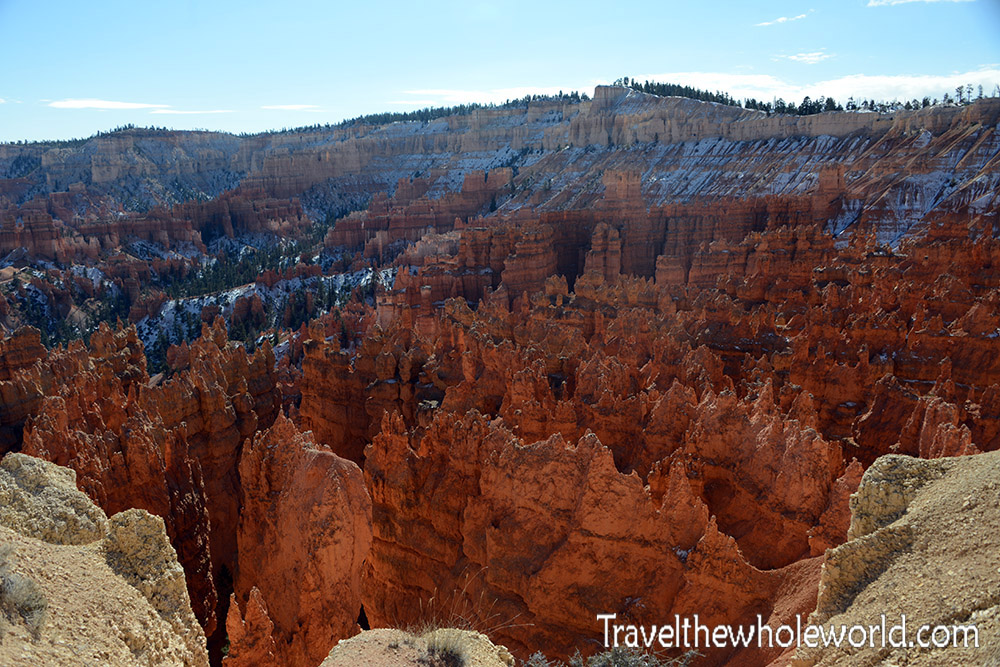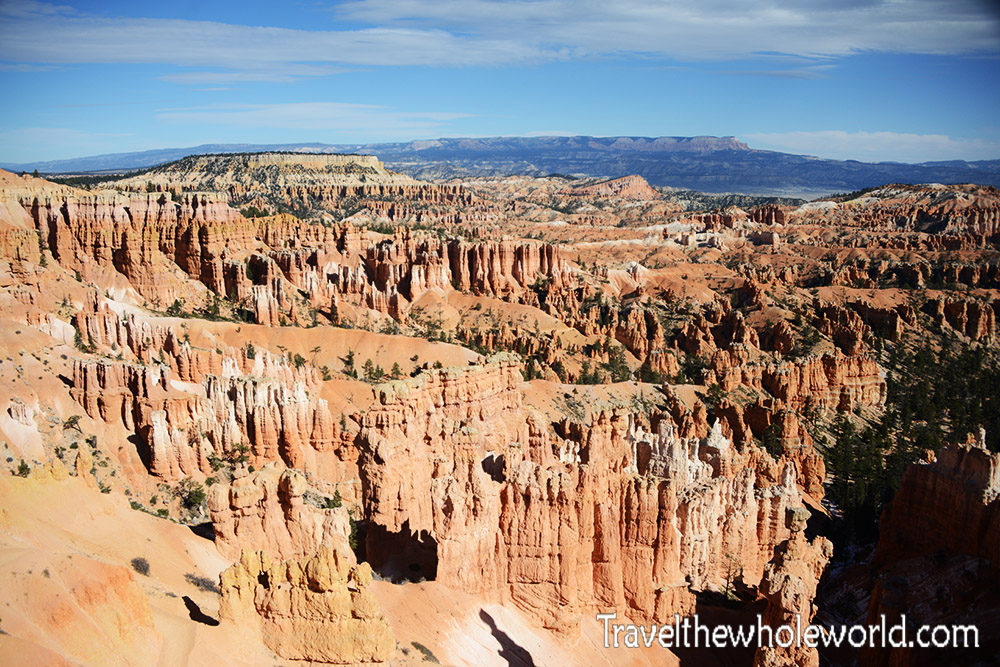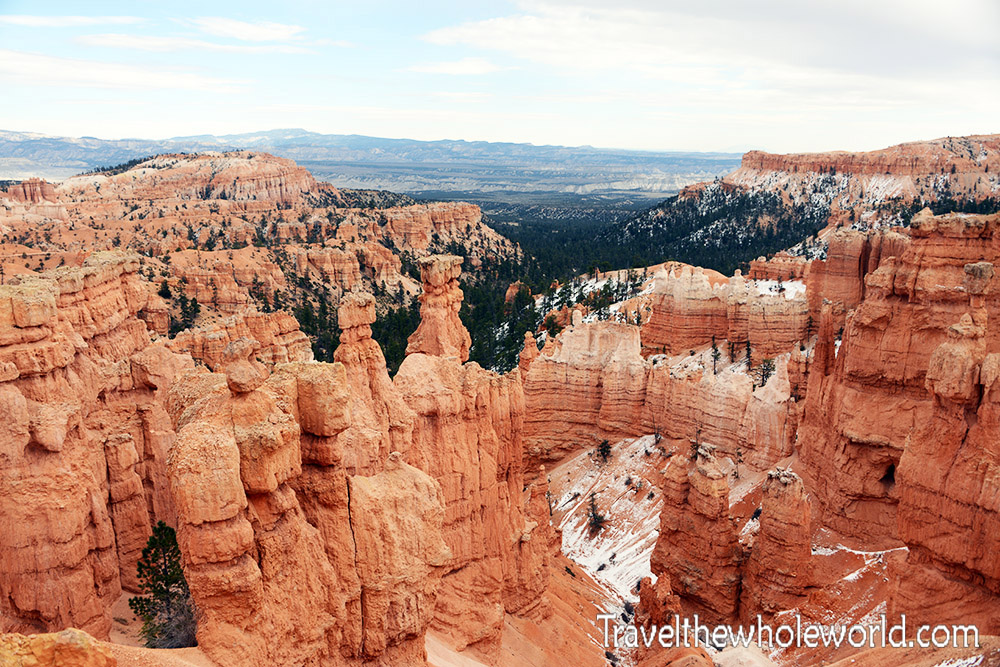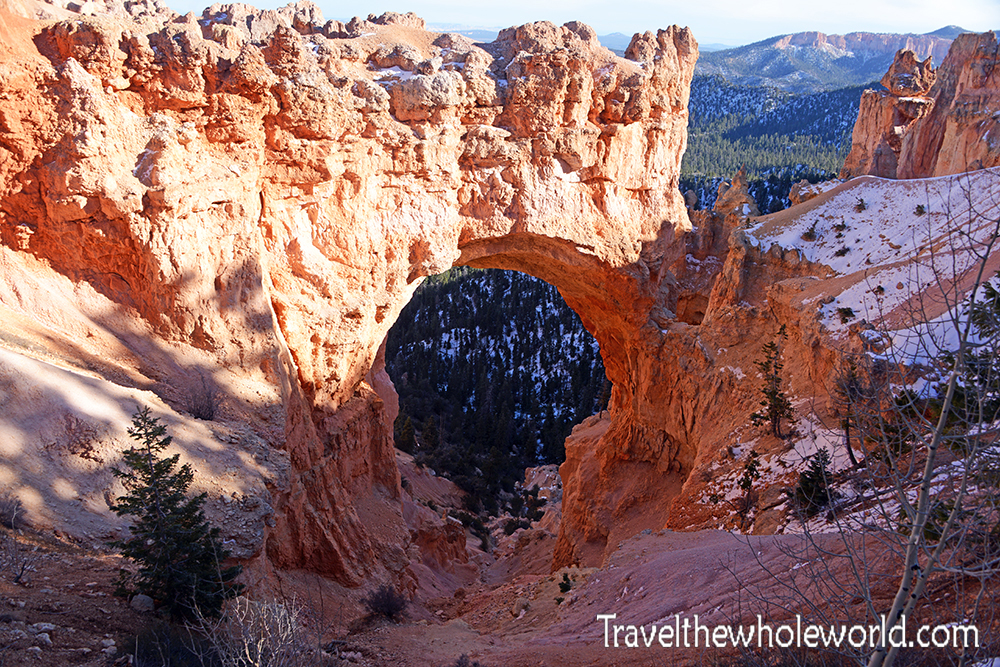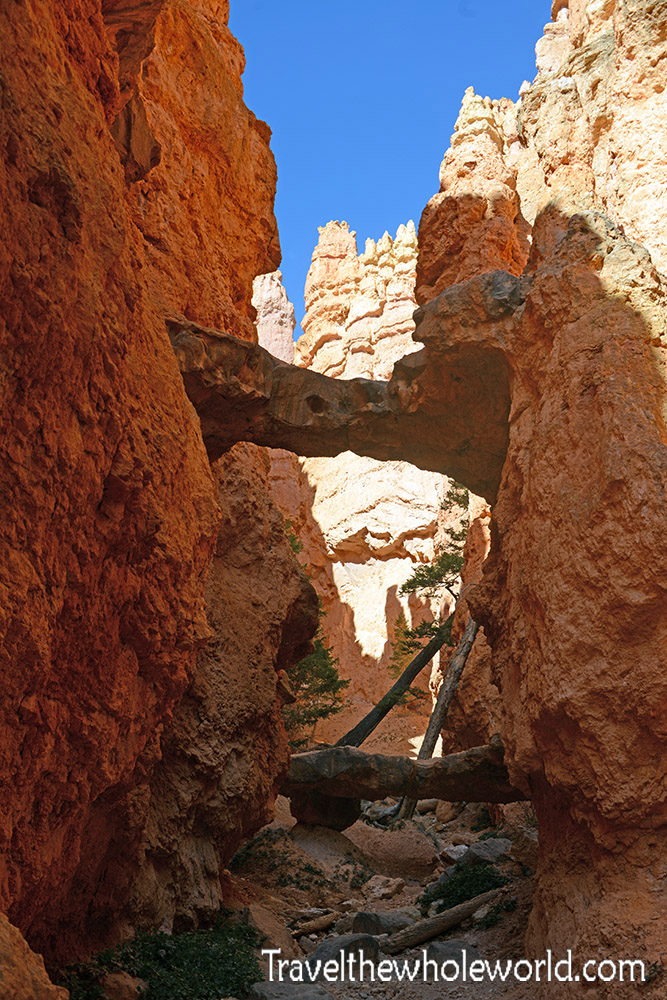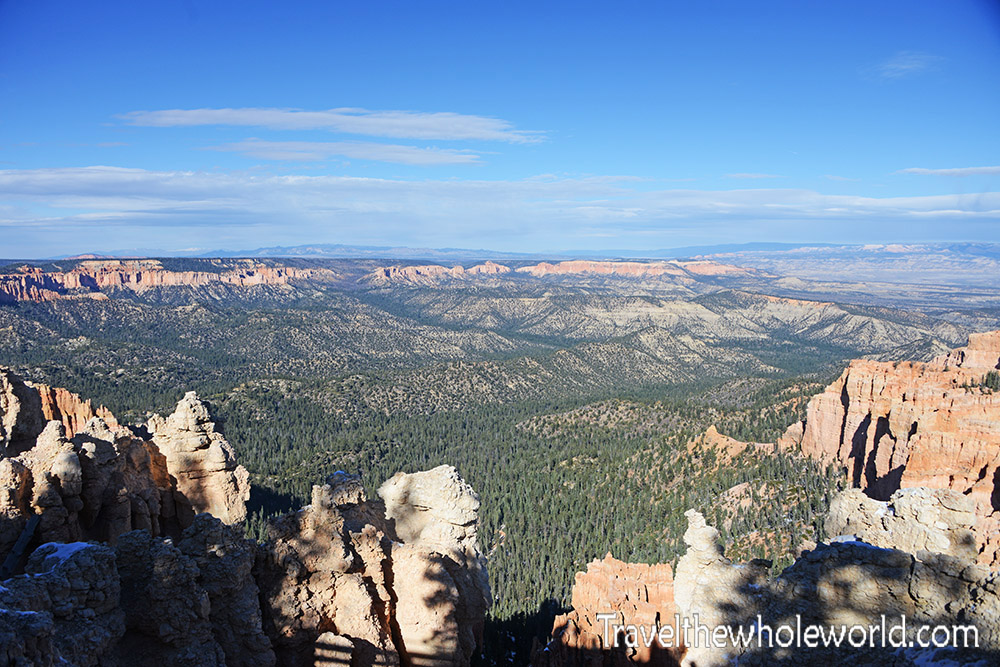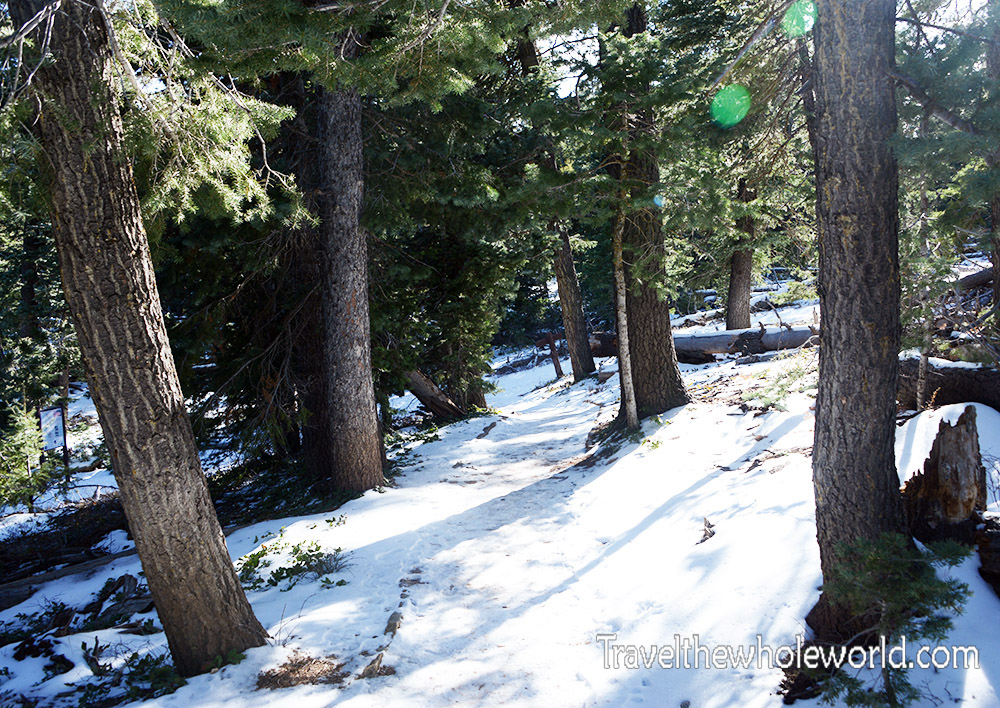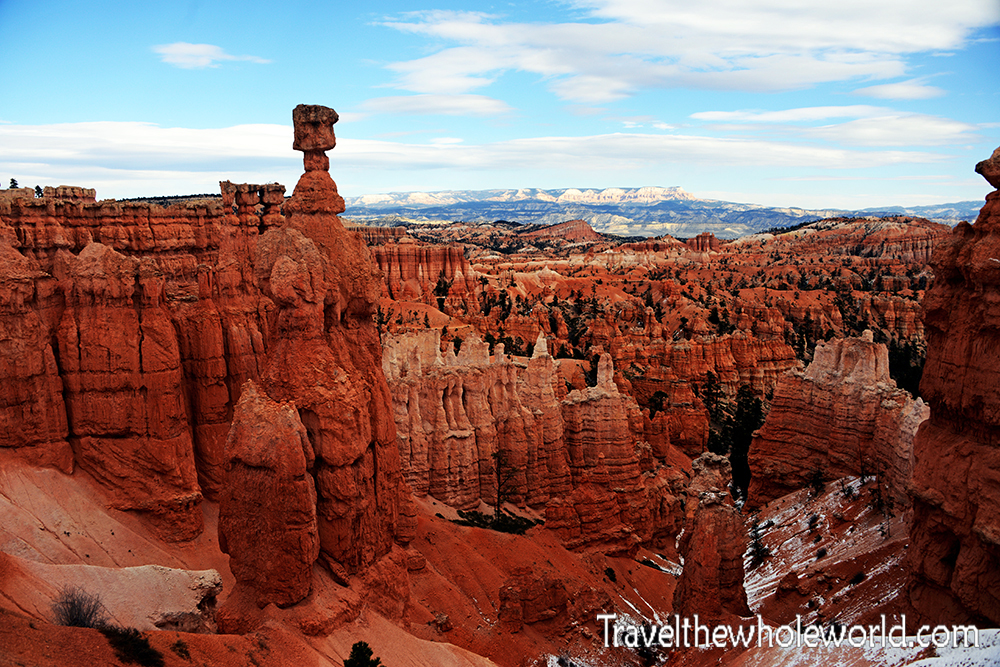Visiting Bryce Canyon
My very first sight in Bryce Canyon was the famous Amphitheater. Despite calling itself a canyon, Bryce is more of a collection of incredible rock formations in a valley with many incredible views. I hadn’t yet discovered HDR photography on this trip, and if I had I could have taken a much better photo than what I’m showing above and below. Regardless you can see how unique the terrain is here with all the colorful rock towers.
The rock towers are actually known as hoodoos in the geologist world. These unique formations took millenniums to form and are the result of weather patterns. The phenomenon that formed the hoodoos in Bryce Canyon is known as frost wedging. In the colder times of the year rainwater will fill cracks and freeze at night. Freezing water expands and forms giant cracks and helps erode the soil. Eventually some of this is washed away and what’s left are the giant rock towers.
I assume this natural arch above and bridge below was formed by the same frost wedging. Maybe this piece of rock below got lucky and survived while the terrain around it was washed out over time. I figure it’s a matter of time until this thing collapses so hopefully there won’t be an unlucky hiker underneath!
On this trip to Utah I saw both Bryce Canyon and Zion back to back. I think both are unique in their own way and just as scenic. I would say that I found Zion to have much better hiking trails. I found myself in Bryce mostly being tourist from the car and driving to all the different view points with some short hikes here and there. This photo above is an area that I call the bowl. It reminds me of a similar view I saw in Big Bend Texas.
While in Zion it was fairly warm even though it was mid November. Bryce Canyon is much higher in altitude so is also much colder. Several view points exist around 9,000 feet (2,700 meters) and when I visited there was lots of snow along the higher trails.
This last photo is my favorite part of Bryce Canyon. This involves a relatively short hike down some steep terrain to what’s known as Thor’s Hammer. It’s definitely the most famous part of Bryce and is an icon for the entire national park.
